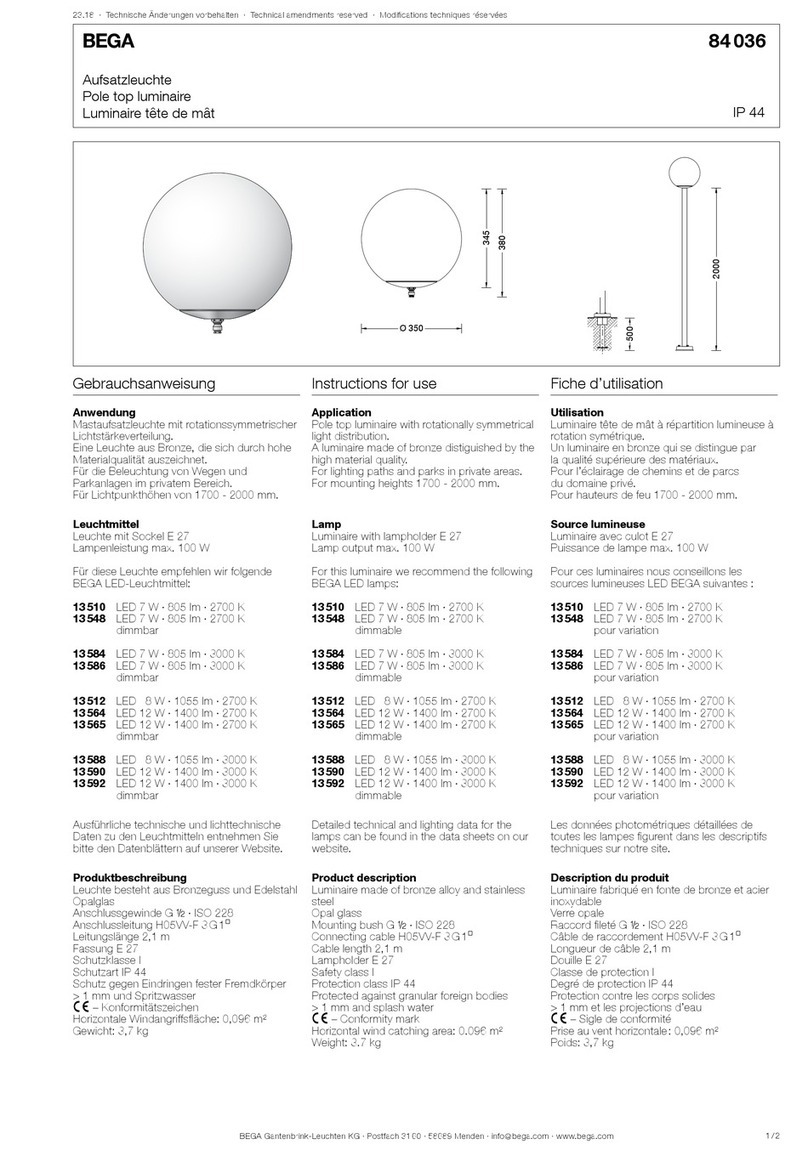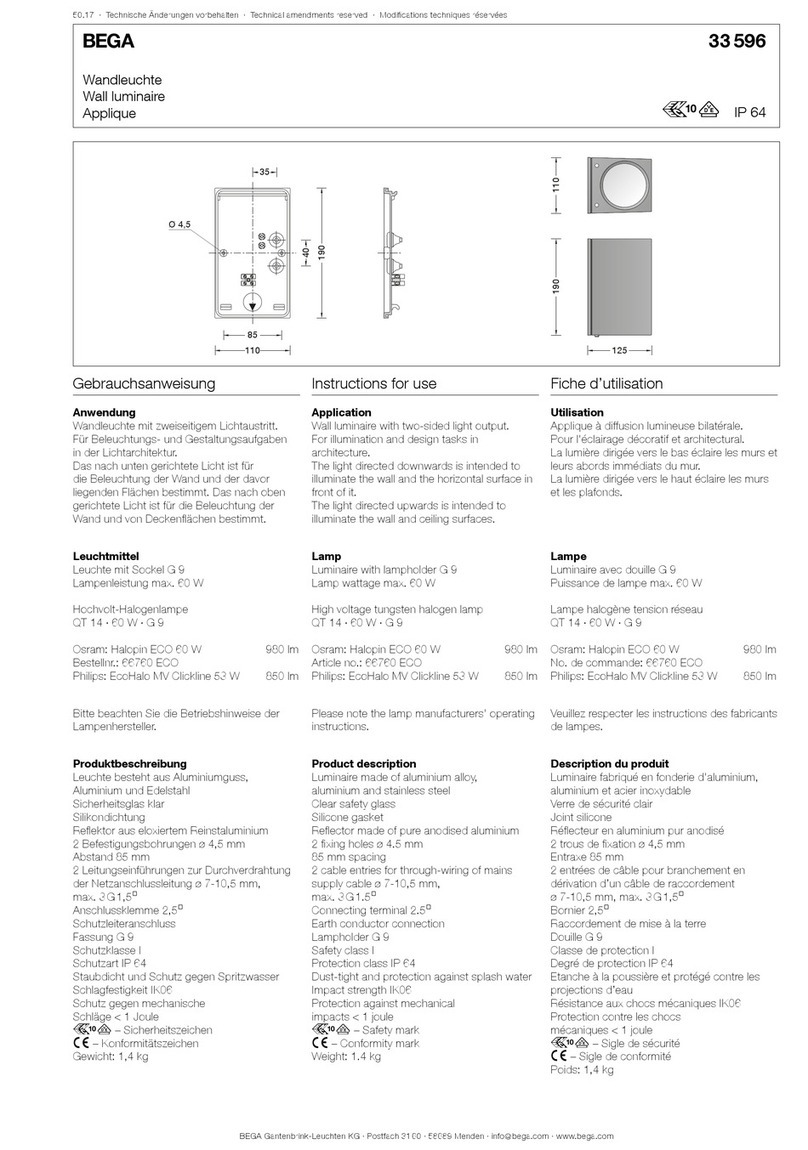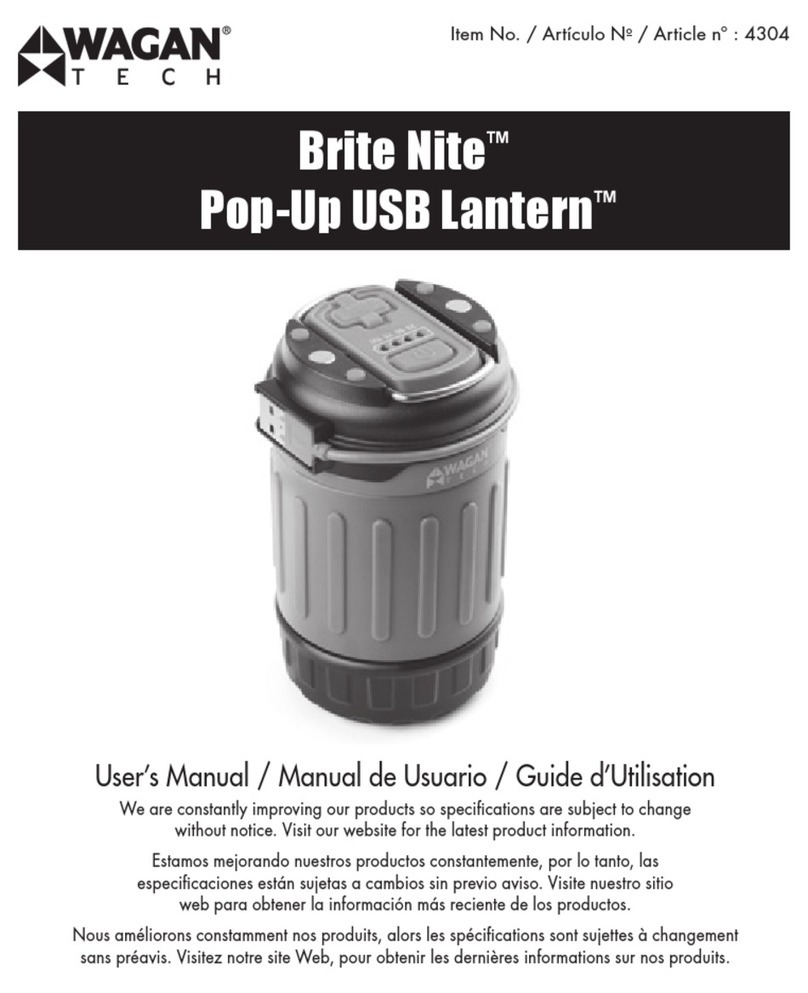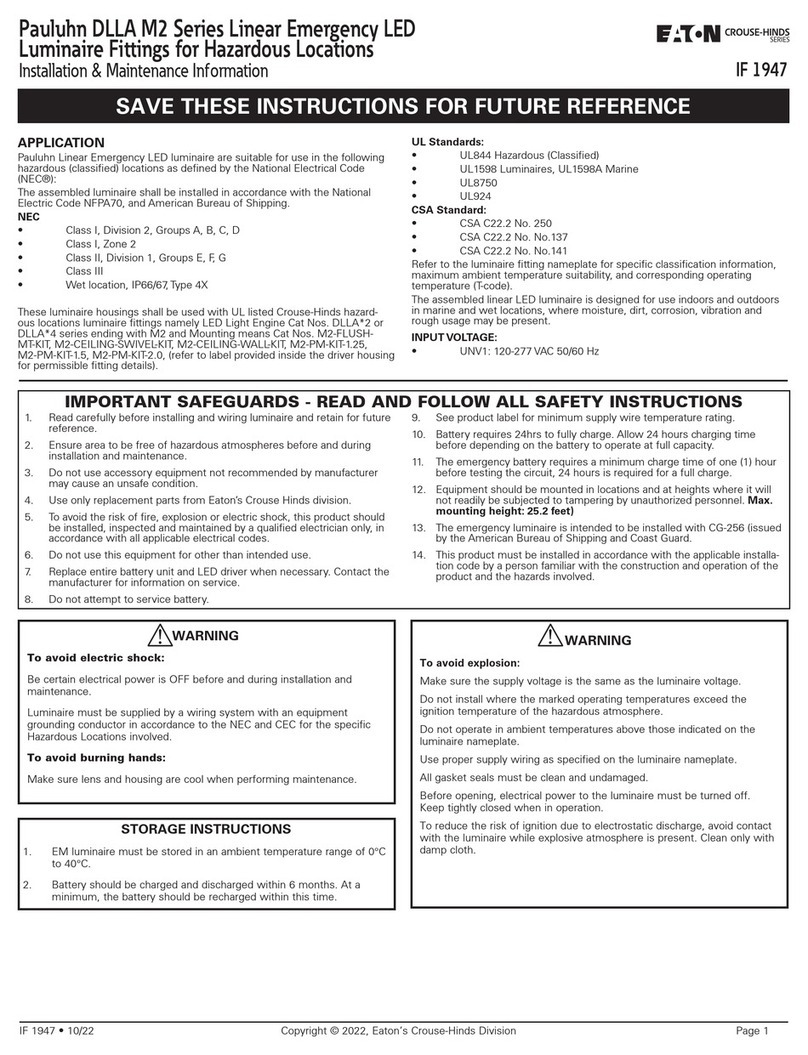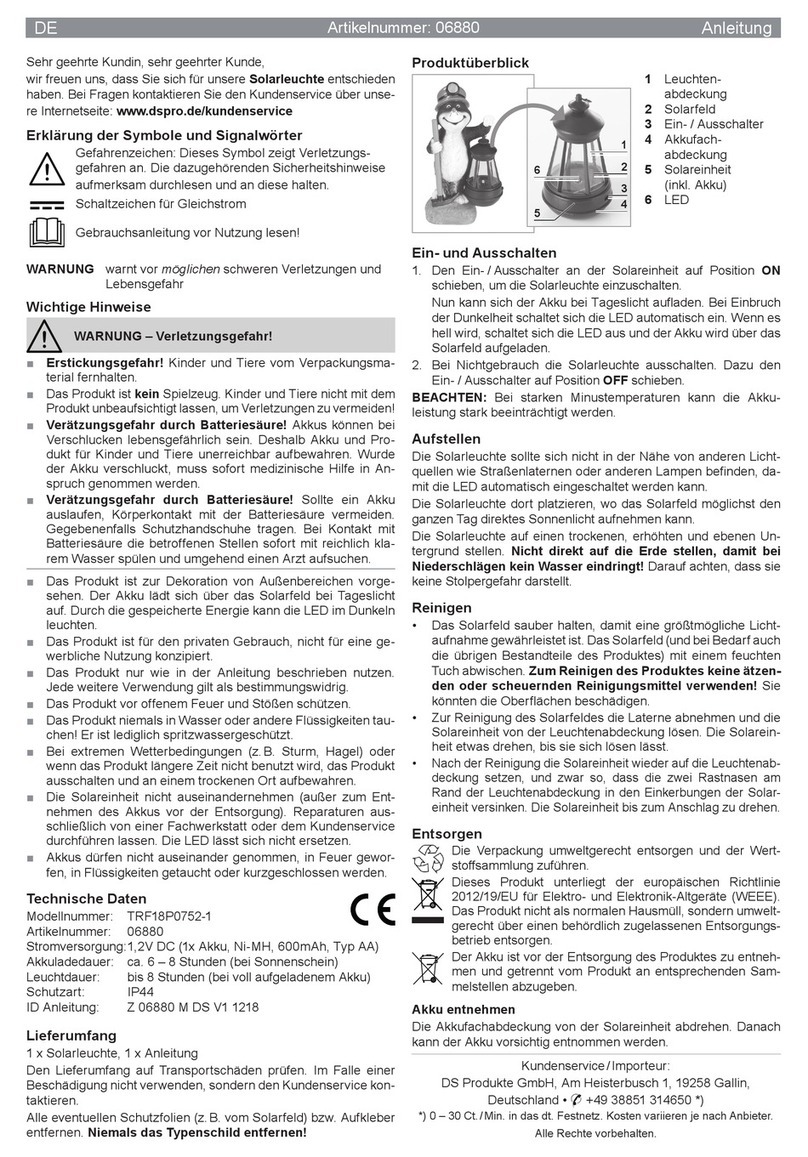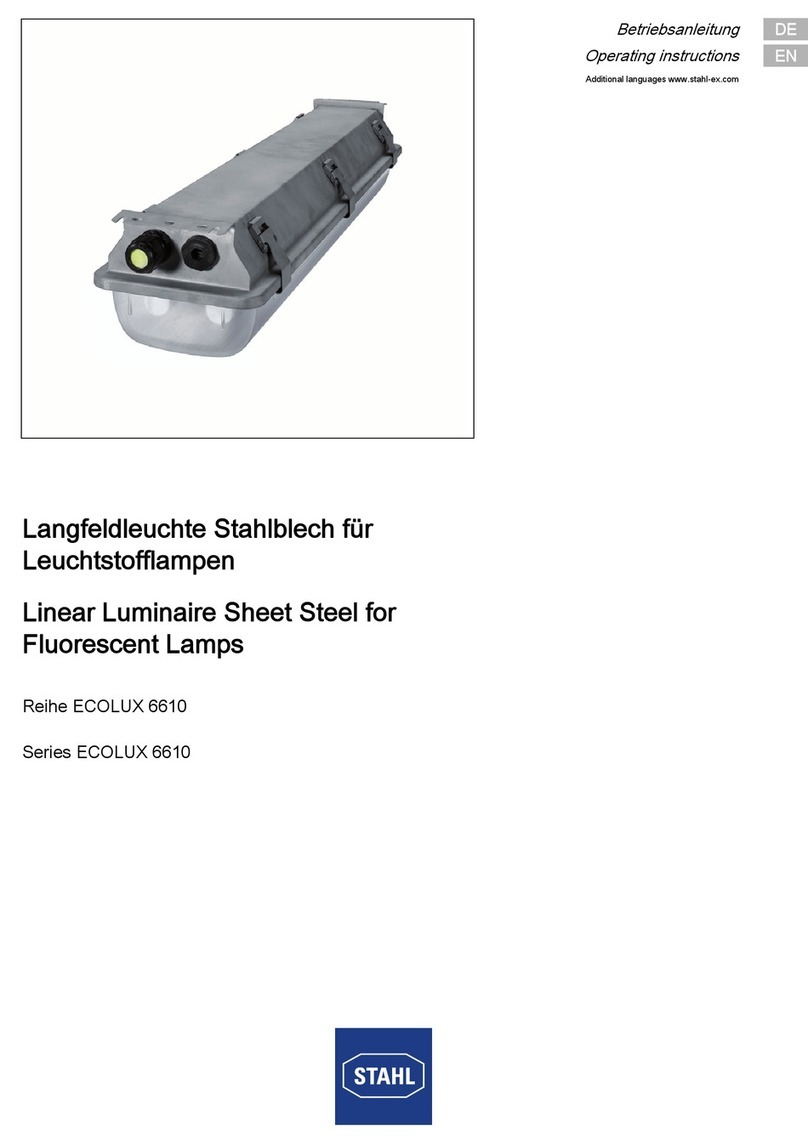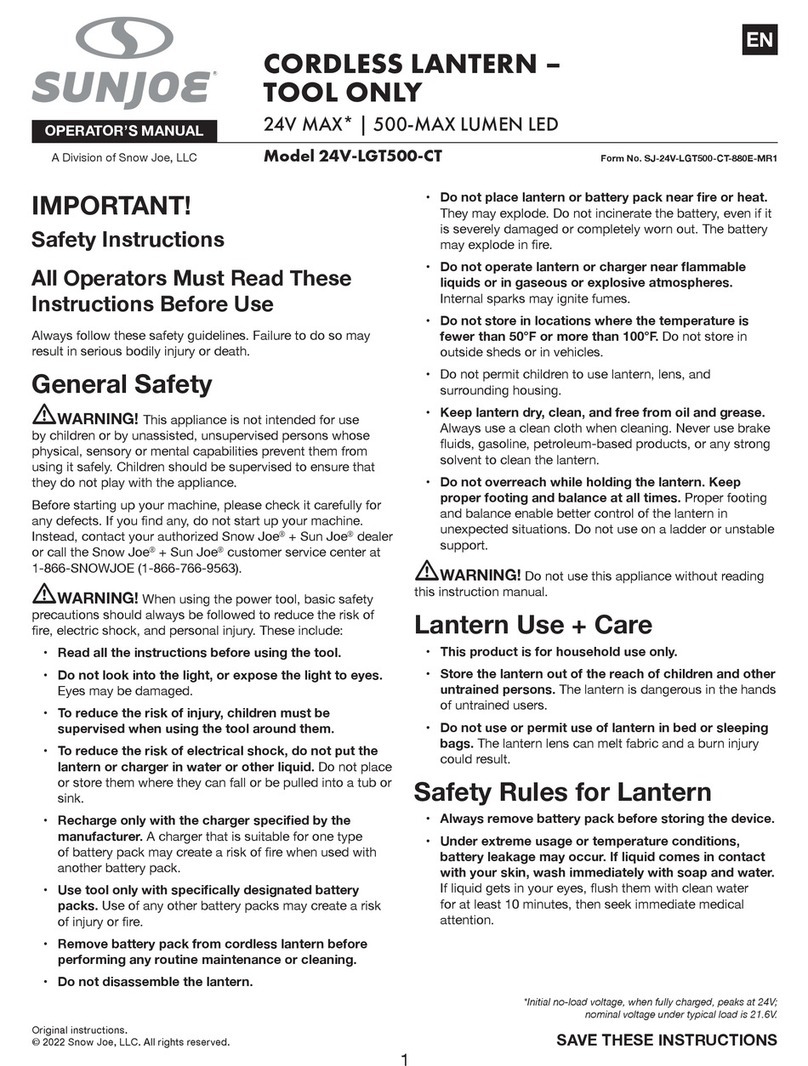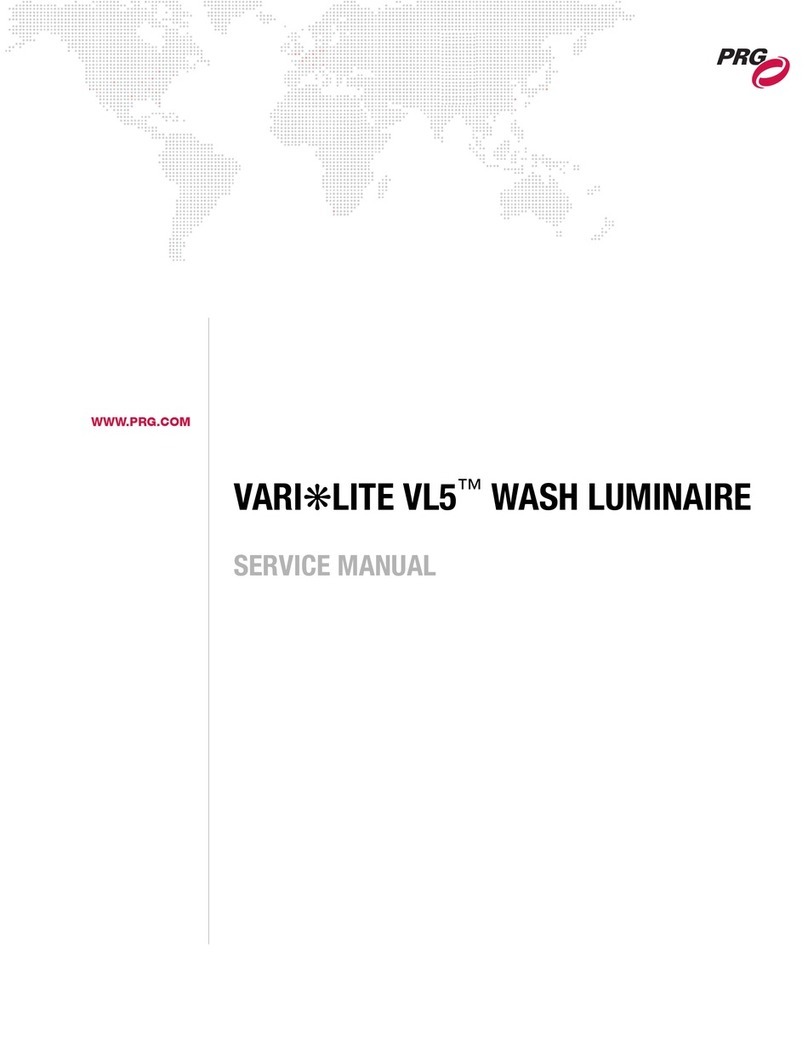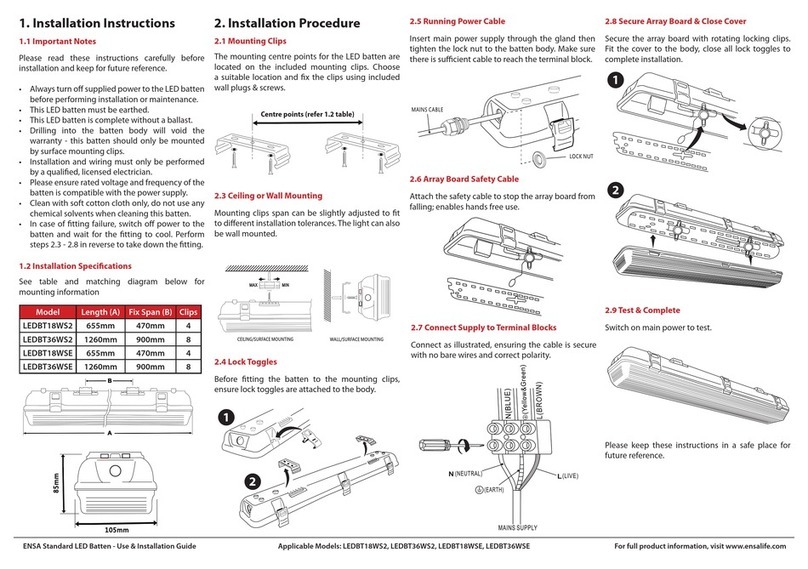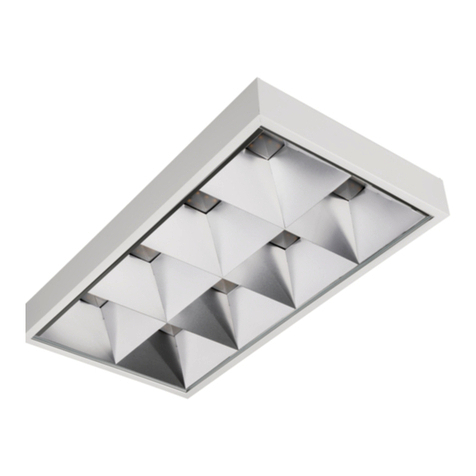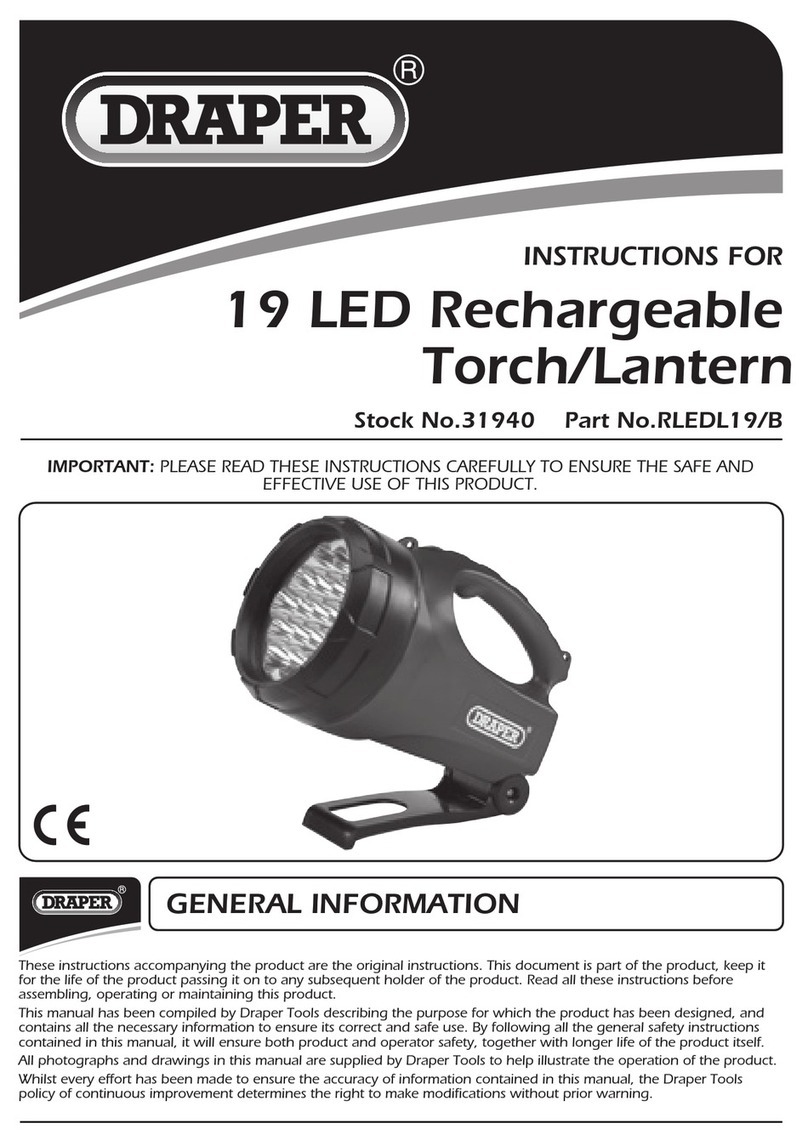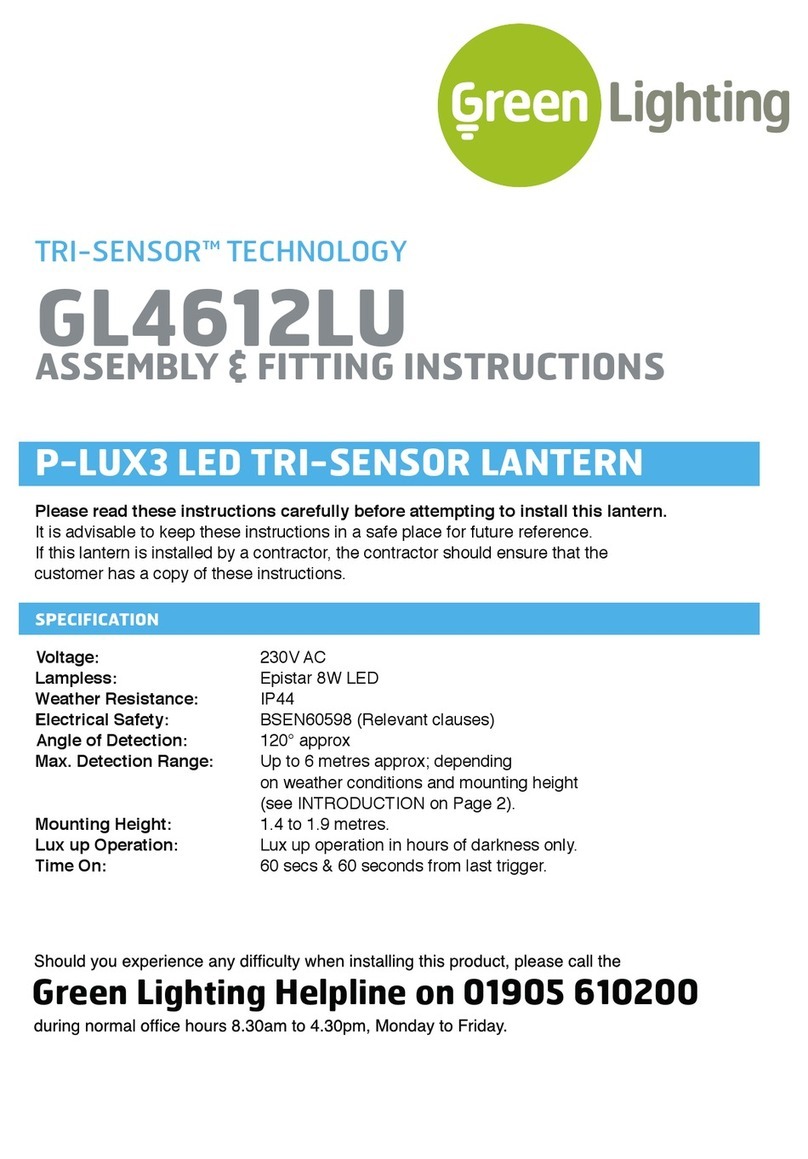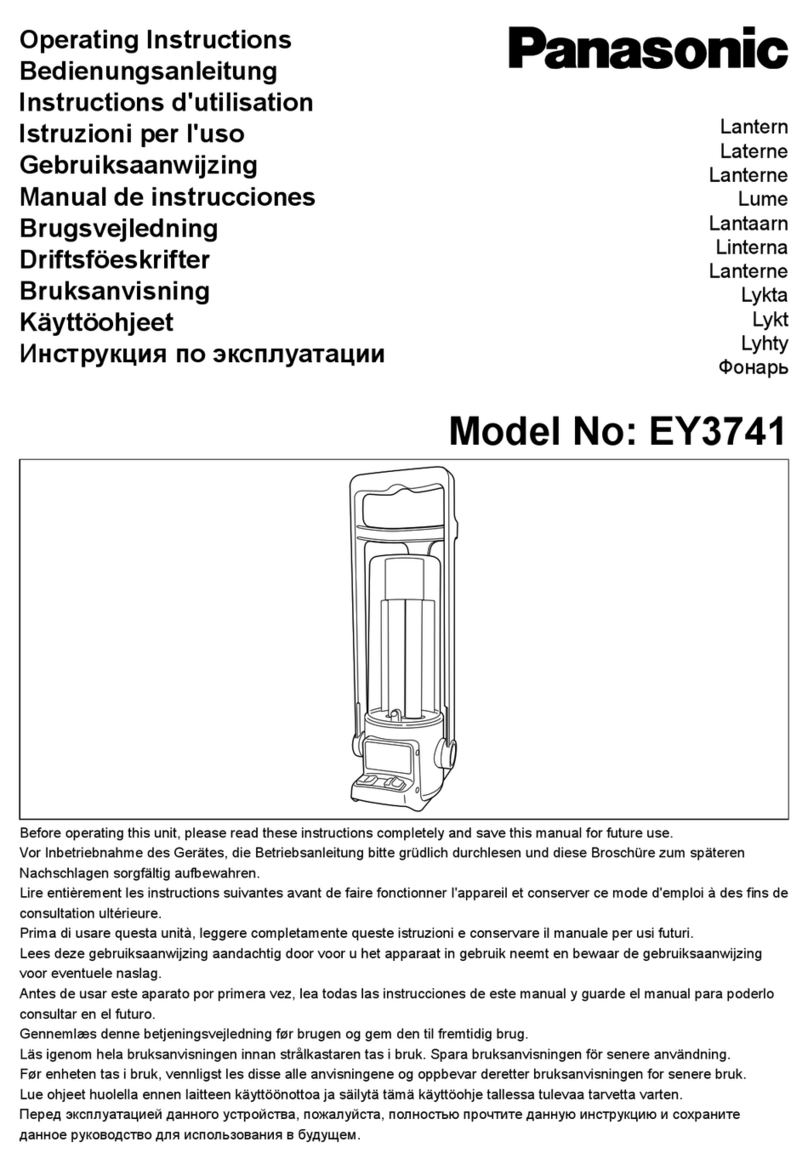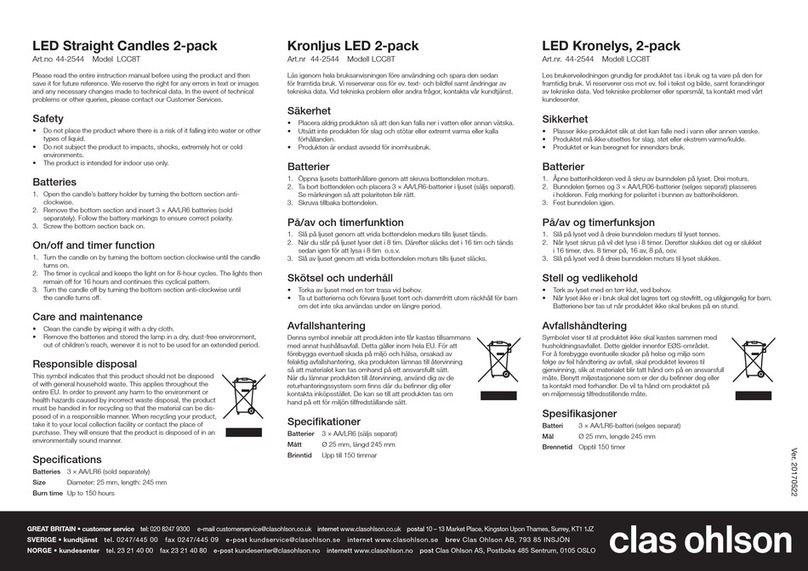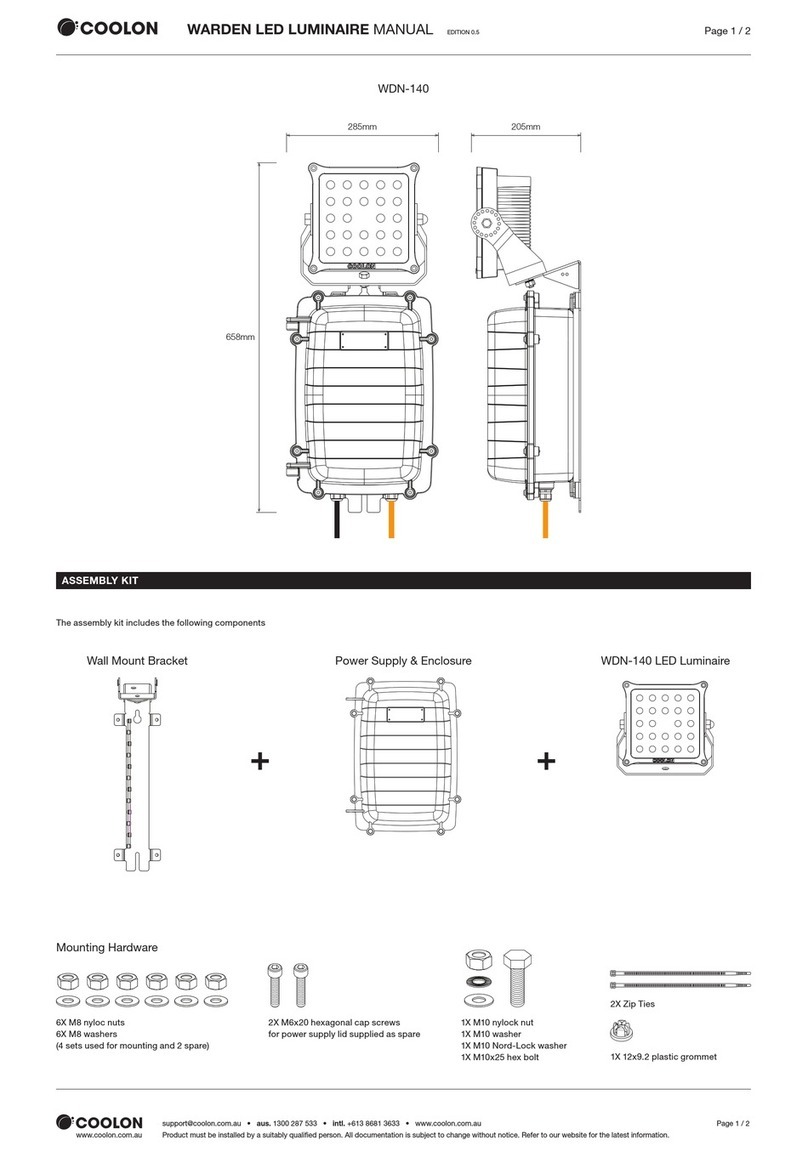9
ENGLISH
Customer First Center • 1121 Highway 74 South, Peachtree City, GA 30269 USA
Call for customer service and/or missing or damaged parts (800-334-6871)
www.cooperlighting.com
Patents 5,414,263, 5,590,953, and 6,376,840
© 2004 Cooper Lighting
Reproductions of this document without prior written approval of Cooper Lighting are strictly prohibited.
Printed in China
Two-year limited warranty
Cooper Lighting (“the Company”) warrants this product (the “product”) against
defects in material or workmanship for a period of two years from date of original
purchase, and agrees to repair or, at the Company’s option, replace a defective
product without charge for either replacement parts or labor during such time.
This does not include labor to remove or install fixtures.
This warranty is extended only to the original purchaser of the product. A pur-
chasers receipt or other proof of date of original purchase acceptable to the
Company is required before warranty performance shall be rendered.
This warranty only covers product failure due to defects in materials or workman-
ship which occurs in normal use. It does not cover the bulb or failure of the prod-
uct caused by accident, misuse, abuse, lack of reasonable care, alteration, or
faulty installation, subjecting the product to any but the specified electrical service
or any other failure not resulting from defects in materials or workmanship.
Damage to the product caused by separately purchased, non-Company brand
replacement bulbs and corrosion or discoloration of brass components are not
covered by this warranty.
There are no express warranties except as described above.
THE COMPANY SHALL NOT BE LIABLE FOR INCIDENTAL, SPECIAL OR CON-
SEQUENTIAL DAMAGES RESULTING FROM THE USE OF THE PRODUCT OR
ARISING OUT OF ANY BREACH OF THIS WARRANTY. ALL IMPLIED WAR-
RANTIES, IF ANY, INCLUDING IMPLIED WARRANTIES OF MERCHANTABILITY
AND FITNESS FOR A PARTICULAR PURPOSE, ARE LIMITED IN DURATION
TO THE DURATION OF THIS EXPRESS WARRANTY. Some states do not allow
the exclusion or limitation of incidental or consequential damages, or limitations on
how long an implied warranty lasts, so the above exclusions or limitations may not
apply to you.
No other warranty, written or verbal, is authorized by the Company. This warranty
gives you specific legal rights and you may also have other rights which vary from
state to state.
To obtain warranty service, please write to Cooper Lighting. 1121 Highway 74
South, Peachtree City, GA 30269. Enclose product model number and problems
you are experiencing, along with your address and telephone number. You will
then be contacted with a solution, or a Return Goods Authorization number and
full instructions for returning the product. All returned products must be accompa-
nied by a Return Goods Authorization Number issued by the Company and must
be returned freight prepaid. Any product received without a Return Goods
Authorization Number from the Company will be refused.
Cooper Lighting is not responsible for merchandise damaged in transit. Repaired
or replaced products shall be subject to the terms of this warranty and are inspect-
ed when packed. Evident or concealed damage that is made in transit should be
reported at once to the carrier making the delivery and a claim filed with them.

